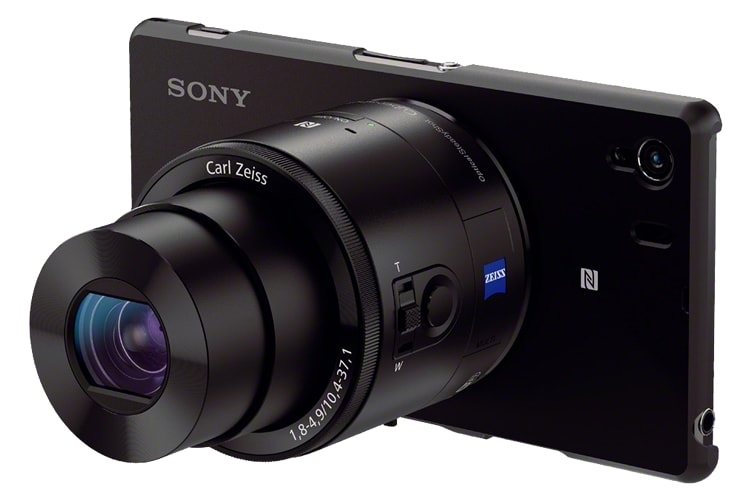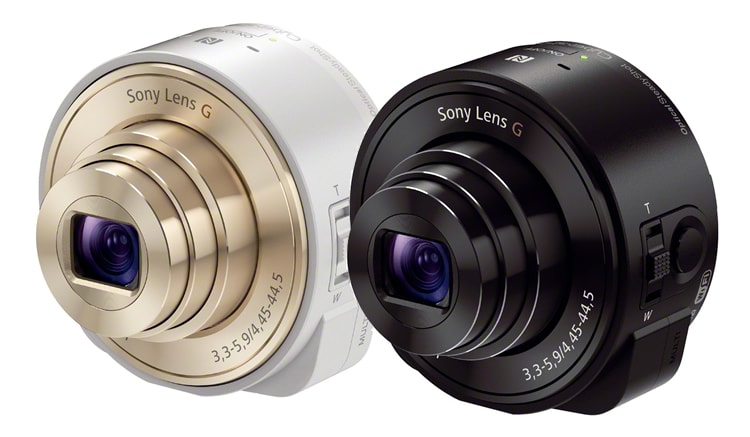A Look At The New Sony QX10 And QX100
The rumour mill started a few months ago. Reputedly, Sony was creating some kind of smartphone lens which had its own integrated sensor. An exciting idea for sure, but had Sony really invented something new? Well, yes, they had.
Sony pitched up to the IFA consumer electronics show at the beginning of September with an armful of products to show to the world’s press. Buried underneath a pile of new Xperia smartphones, some not-ready-for-market smart watches, and a couple of dreary, standard compact cameras, was what I’d been waiting for – the QX10, and its bigger, faster brother, the QX100.

The Lowdown
Okay, so I’ve been a little too excitable here; not everyone will have heard about Sony’s new range, let alone be as enthused about it as I am. Let’s backtrack to the beginning.
So what is the QX range? Sony’s concept has been to build a new type of camera, one which is designed to work in partnership with a smartphone (as long as it is running Android or iOS). Physically, neither of the QX models is particularly different from the lenses you might attach to a DSLR, although they are a great deal smaller. However, the innovation here can be found at the back of each QX. Embedded within the lens structure is a sensor, equivalent to the type you might find in a compact camera. In fact, the sensor in the QX100 is identical to the sensor found in Sony’s flagship RX100 compact – in other words, a seriously high quality piece of image-recording kit. The QXs are also equipped with a memory card slot, so external storage isn’t required, and each model has manual controls, on the side of the lens, for the adjustment of zoom and focus. In essence, a QX has nearly all the attributes of an independent digital camera.
So where does the smartphone come in? Well, the one component missing from these camera-lens hybrids is a viewfinder. Or more accurately, a screen. The QX attaches to your phone using a magnetic clip-on dock, and the two devices communicate wirelessly via Wi-Fi or NFC (depending on your phone’s capabilities), providing what is, essentially, a live-stream from the QX to your phone. Due to the lack of physical attachment required for data transfer, you can actually hold a QX anywhere within ten feet of your phone, and you’ll still be able to line up a shot.

Of course, the inherent connectivity of a smartphone also brings with it a side-effect benefit for QX users, which is the ability to edit and share images on the go.
This whole picture-taking experience adds up to a new kind of camera which is irrefutably different and innovative. That said, I imagine there will be plenty of naysayers ready to claim that it is just another whacky idea dreamed up in order to push sales, and that it will soon fall by the wayside. Whether or not any of that is true, one thing is for certain – the QX range matters.
Why It Matters
Right now, the traditional heavyweights of digital camera manufacturing know they are in trouble. Not the Blackberry kind of trouble; I’m talking about much longer term trouble, with a much shallower downslope. But the ongoing improvement of photographic technology in smartphones is a trend which companies like Canon and Nikon – who have traditionally relied on compact camera sales as a significant part of their respective business models – have yet to find any real answer to.
Usually, it is the kind of seismic cultural change that we’ve seen with the rise of phoneography which drives large, lumbering corporations in one of two directions – they either innovate their way out of trouble, or they sink.
This exact scenario can be seen in a real-world example. Two one-time giants of the film photography industry, Polaroid and Kodak, both hit trouble as film sales declined. Polaroid has, in recent years, risen from the ashes, harnessing the retro-coolness of its brand and blending it with a slice of new, instant printing technology.
Kodak, on the other hand, is no more. During the long, drawn-out, sorrowful decline of its film sales, it tried to jump on the digital train, but it did so without bringing anything new to the marketplace. Kodak first attempted to take on Canon’s and Nikon’s digital compacts, then their DSLRs, before finally attempting to beat Flip at its own pocket camcorder game. In the end, Kodak couldn’t carve out a decent share from any of these markets – not least due to the dominance of the better established competition – and so gave up on cameras altogether. The final days of Kodak were spent trying to sell unremarkable, economical photo printers; that didn’t work either.
Sony: Innovating
So, what does all of this have to do with Sony’s QX range?

Given that camera manufacturers need to find new ways of making sales, Sony’s innovation, whether successful in its execution or not, is encouraging. It shows that they are not afraid to come up with something new, and it also shows they are capable of delivering on their ambitions. This, in part, can be attributed to Sony’s wide-ranging capabilities within general consumer electronics, including smartphones – a great help if you want to build a smartphone-linked camera.
Compare and contrast that with Canon’s best attempt at innovation – the Powershot N. It is a fairly standard compact camera which looks like a normal Powershot with the shoulders cut off. For some reason, Canon thinks that the N is worth $100 more than similarly equipped models of a more standard shape. That doesn’t sound like the kind of “innovation” most camera-buying consumers are looking for.
I’m not going to sensationalize here – the announcement of the QX series doesn’t represent a seismic shift. But it does raise questions. If a smartphone can sport a high quality lens, for how much longer will consumers want, or need, to haul around a DSLR? And if they are going to use a DSLR, will they be okay with its bulk, inability to edit images, or lack of access to Instagram, Flickr, or Facebook?
Who knows whether well-equipped phones, smarter DSLRs, or some other type of camera will be the Next Big Thing. But one thing’s for sure; on current evidence, I’ll be backing firms with all-round electronics experience, such as Sony, to triumph over the stuck-in-the-mud camera manufacturers which dominate the marketplace today.
